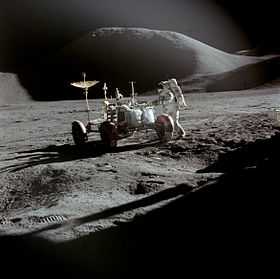Mons (astrogeology)

In planetary geology, a mons (pl. montes, from the Latin term for "mountain") is a sizable mountain.[2] A smaller domical mountain or hill may be termed a tholus.[2] These are examples of the 55 descriptor terms currently recognized by the International Astronomical Union for features on the surface of a planet or natural satellite (see Planetary nomenclature). Montes commonly originate by tectonic, impact or volcanic processes. Examples of these are the Maxwell Montes on Venus,[3] the Caloris Montes on Mercury,[4] and Olympus Mons on Mars,[5] respectively. However, since the term is based on landform morphology rather than on any set of underlying geologic processes, more unusual origins are possible. For example, the Geryon Montes of Mars are an erosional remnant of a former plateau within Ius Chasma, part of the Valles Marineris canyon system.
As of 4 December 2012, 265 montes (representing either single peaks, clusters of peaks or mountain ranges) had been named by the IAU on Mercury (1), Venus (122), the Moon (49), Mars (47), Jupiter's moon Io (23) and on Saturn's moons Titan (13), Iapetus (9) and Tethys (1).
While some peaks within craters are named, such as Aeolis Mons within Gale on Mars or the Scheria Montes within Odysseus on Tethys, classical crater central peaks generally are not.
See also
- List of tallest mountains in the Solar System
- Lists of extraterrestrial mountains
References
- ↑ Fred W. Price (1988). The Moon observer's handbook. London: Cambridge University Press. ISBN 0-521-33500-0.
- ↑ 2.0 2.1 Gazetteer of Planetary Nomenclature. http://planetarynames.wr.usgs.gov/DescriptorTerms.
- ↑ Keep, M.; Hansen, V. L. (1994). "Structural history of Maxwell Montes, Venus: Implications for Venusian mountain belt formation". Journal of Geophysical Research 99 (E12): 26015. doi:10.1029/94JE02636. ISSN 0148-0227.
- ↑ Fassett, C. I.; Head, J. W.; Blewett, D. T.; Chapman, C. R.; Dickson, J. L.; Murchie, S. L.; Solomon, S. C.; Watters, T. R. (2009). "Caloris impact basin: Exterior geomorphology, stratigraphy, morphometry, radial sculpture, and smooth plains deposits". Earth and Planetary Science Letters 285 (3-4): 297–308. doi:10.1016/j.epsl.2009.05.022. ISSN 0012-821X.
- ↑ Plescia, J. B. (2004). "Morphometric properties of Martian volcanoes". Journal of Geophysical Research 109 (E3). doi:10.1029/2002JE002031. ISSN 0148-0227.